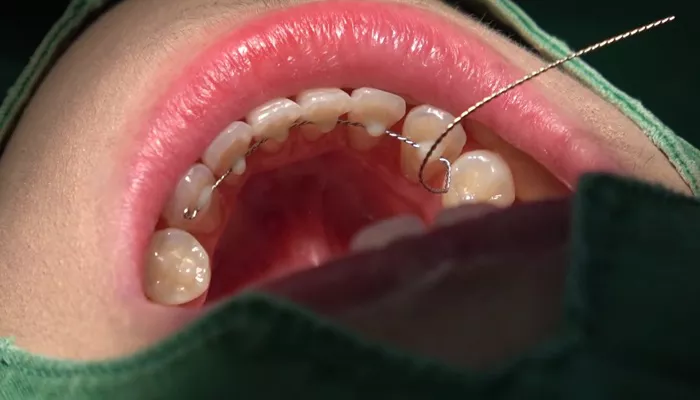Orthodontic treatment has advanced significantly over the years, with various techniques and materials developed to enhance patient outcomes and comfort. One such development is the direct bonding of orthodontic brackets, which has revolutionized the way braces are applied and maintained. Central to this technique is the use of orthodontic cement, which ensures the brackets adhere securely to the teeth. This article delves into the types of cements used for direct bonded orthodontic brackets, examining their composition, benefits, and application processes.
Types of Orthodontic Cement
There are several types of cements used in orthodontics, each with unique properties and benefits. The primary types include:
- Glass Ionomer Cement (GIC)
- Resin-Modified Glass Ionomer Cement (RMGIC)
- Composite Resin Cement
- Self-Adhesive Resin Cement
Glass Ionomer Cement (GIC)
Glass ionomer cement is widely used in orthodontics due to its favorable properties. It is composed of fluoroaluminosilicate glass powder and polyacrylic acid. The key benefits of GIC include:
Fluoride Release: GIC releases fluoride over time, which helps in preventing decalcification around the brackets.
Chemical Bonding: It forms a chemical bond with the tooth structure, providing a strong adhesion.
Moisture Tolerance: GIC is less sensitive to moisture compared to other cements, making it easier to work with in the oral environment.
SEE ALSO: What Age to Start Orthodontic Treatment
Resin-Modified Glass Ionomer Cement (RMGIC)
RMGIC combines the properties of glass ionomer cement and composite resin, offering several advantages:
Enhanced Strength: The addition of resin improves the strength and wear resistance of the cement.
Fluoride Release: Similar to GIC, RMGIC also releases fluoride, providing continuous protection against decay.
Improved Adhesion: The resin component enhances the bonding strength to both the enamel and the bracket.
Composite Resin Cement
Composite resin cements are widely preferred for their superior bonding strength and aesthetic properties. They are composed of a mixture of resin monomers and filler particles. Key features include:
High Bond Strength: Composite resin cements offer the highest bond strength among all types of orthodontic cements, ensuring that brackets remain securely in place.
Aesthetic Appeal: These cements can be color-matched to the tooth, providing an aesthetically pleasing result.
Versatility: They are suitable for various bonding procedures beyond orthodontics, such as veneer and crown placement.
Self-Adhesive Resin Cement
Self-adhesive resin cements simplify the bonding process by eliminating the need for separate etching and bonding steps.
They offer:
Ease of Use: The self-adhesive nature reduces the number of steps required, making the procedure quicker and simpler.
Strong Bonding: Despite the simplified application, these cements provide strong adhesion to both enamel and dentin.
Reduced Sensitivity: They are designed to minimize postoperative sensitivity, enhancing patient comfort.
Choosing The Right Cement
The choice of cement for direct bonded orthodontic brackets depends on various factors, including the clinical situation, patient needs, and the orthodontist’s preference. Here are some considerations:
Patient Factors
Oral Hygiene: For patients with poor oral hygiene, cements with fluoride release (GIC and RMGIC) are preferred to help prevent decay.
Aesthetic Requirements: For patients concerned about the appearance of their braces, composite resin cements offer better aesthetics.
Clinical Factors
Moisture Control: In situations where moisture control is challenging, such as in the posterior teeth, GIC and RMGIC are more suitable due to their moisture tolerance.
Bonding Strength: For cases requiring strong bonding, such as with metal or ceramic brackets, composite resin cements are ideal.
Application Process
The application process for bonding orthodontic brackets involves several steps to ensure optimal adhesion and patient comfort. Here is a step-by-step overview:
1. Tooth Preparation
Cleaning: The teeth are thoroughly cleaned to remove plaque and debris.
Etching: The enamel surface is etched using phosphoric acid to create micro-porosities, enhancing the bond strength.
Rinsing and Drying: The etched surface is rinsed and dried, ensuring it is free of moisture and contaminants.
2. Bracket Preparation
Application of Cement: The chosen orthodontic cement is applied to the base of the bracket.
Placement: The bracket is placed on the etched enamel surface and positioned correctly.
3. Bonding
Light Curing: For light-cured cements (composite resin), a curing light is used to harden the cement.
Chemical Curing: For chemically cured cements (GIC and RMGIC), the cement sets through a chemical reaction.
4. Final Adjustments
Excess Cement Removal: Excess cement is removed from around the brackets to prevent irritation and improve aesthetics.
Bracket Positioning Check: The final position of the brackets is checked to ensure they are correctly aligned.
Conclusion
Choosing the right cement for direct bonded orthodontic brackets is crucial for the success of orthodontic treatment. Each type of cement offers unique advantages, and the selection should be based on the specific needs of the patient and the clinical situation. Glass ionomer cements and resin-modified glass ionomer cements are excellent choices for their fluoride release and moisture tolerance. Composite resin cements provide superior bond strength and aesthetic appeal, while self-adhesive resin cements simplify the bonding process.

